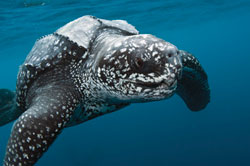Plant Profile
|
|
|
 |
New England Aster
|
Over the Garden Fence
|
|
|
 |
B.C. Backyard Oasis
Meet Maureen Raymond. She turned her small suburban garden in Chilliwack, B.C. into a wildlife-friendly space, with carefully chosen native plants and ecological gardening practices.
|
Backyard Habitat 'How To'
|
|
|
 |
Cover Up!
This issue, find out why mulch is good for both your garden and wildlife, and how to make mulching easy at home. Reprinted from the July/August 2011 issue of Canadian Wildlife magazine.
|
Fun Stuff
|
|
|
 |
Wild Wallpaper
Download this season's wallpaper to brighten your desktop! This little northern saw-whet owl can be found from coast to coast in Canada. Attract them to your garden with evergreen trees.
Check out our other free wallpapers » |
Gardening Calendar
|
|
|
 |
Things to do in Autumn
Clean your gardening tools to help them last longer and be ready for next year.
After the first frost, mulch any plants that are frost sensitive with leaves, compost or straw. This helps them withstand the upcoming freeze/thaw cycles that can stress roots.
Leave seedheads on perennial plants as food for birds and mammals.
|
|
Ask the Expert
|
|
|
 |
Q : How do I help migrating wildlife?
A : Provide natural habitat so they have space to rest and feed. This helps them prepare for and endure their long journey. It also gives them what they need to survive when they return. Consider trees, shrubs and late-blooming regionally native plants as well as early spring bloomers.
|
What's New @ CWF
|
|
|
 What's New with WAG What's New with WAG
WildAboutGardening.org's Native Plant Encyclopedia has a new look and smarter search engine. We're busy uploading images and new entries plus translating it all into French. It'll help you choose the best plants for your garden or identify a mystery plant you've discovered. Go » |
 The Amazing Turtle Migration The Amazing Turtle Migration
Want to help the leatherback? Vote for CWF's project, The Amazing Turtle Migration, and we could win $100,000 for leatherback research! Vote » |
 CWF Magazine CWF Magazine
Canadian Wildlife magazine: an exclusive photo essay on the mysteries of wolf-coyote hybrids, an investigative feature story on Canada's endangered bluefin tuna fishery, a profile on Quebec actor Roy Dupuis' conservation campaign and much, much more. Check out WildlifeMagazine.ca for exclusive content and previews.
|
 WILD magazine WILD magazine
A special Moose and Weasel forest fun pack in honour of National Forest Week, Canada's migration champions and a peek inside the tiny world of pygmy species, plus the Wild Bunch, and WILD's regular game and jokes—it's all in the September/October issue of WILD! Subscribe » |
 Your Big Backyard Your Big Backyard
Animals on the move, baby animals, plus all the regular fun, interactive games—it's all in the September issue of Y our Big Backyard. Subscribe » |







 What's New with WAG
What's New with WAG The Amazing Turtle Migration
The Amazing Turtle Migration CWF Magazine
CWF Magazine WILD magazine
WILD magazine Your Big Backyard
Your Big Backyard
No comments:
Post a Comment